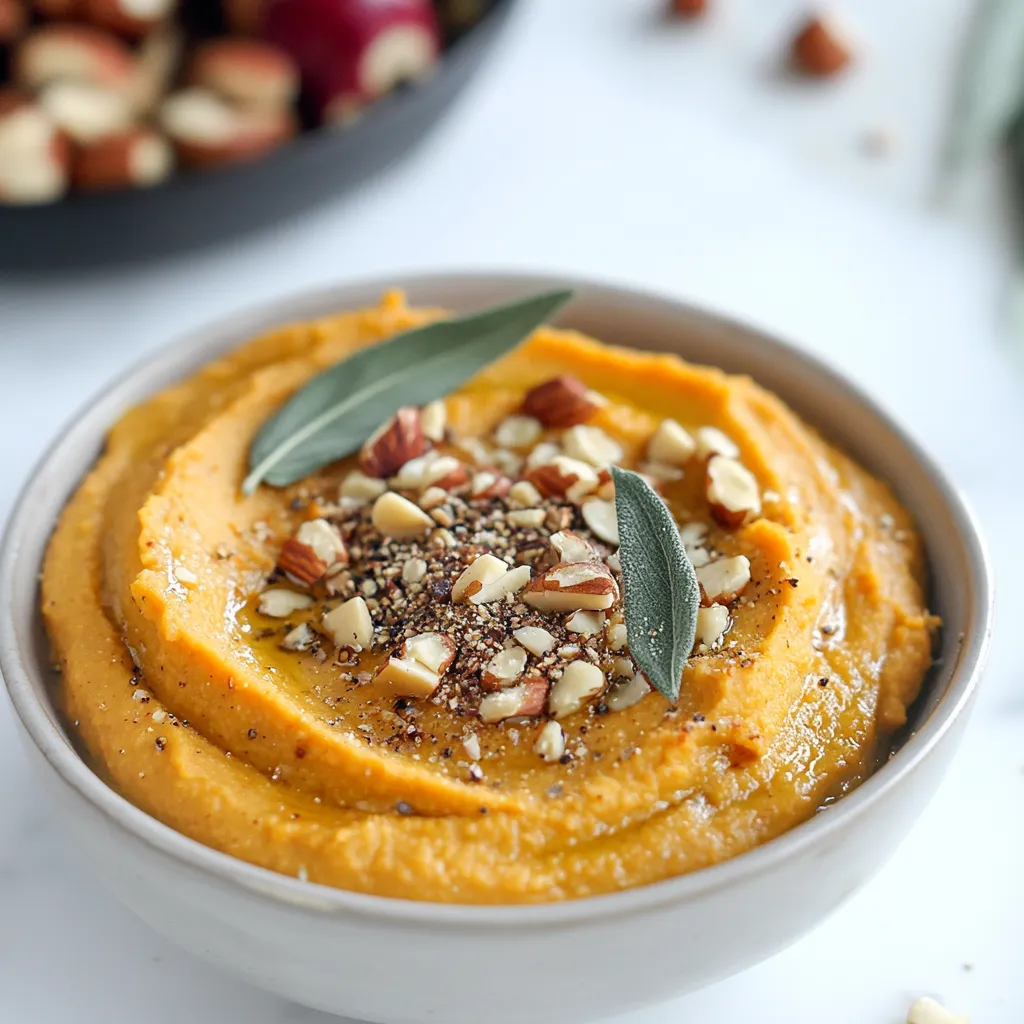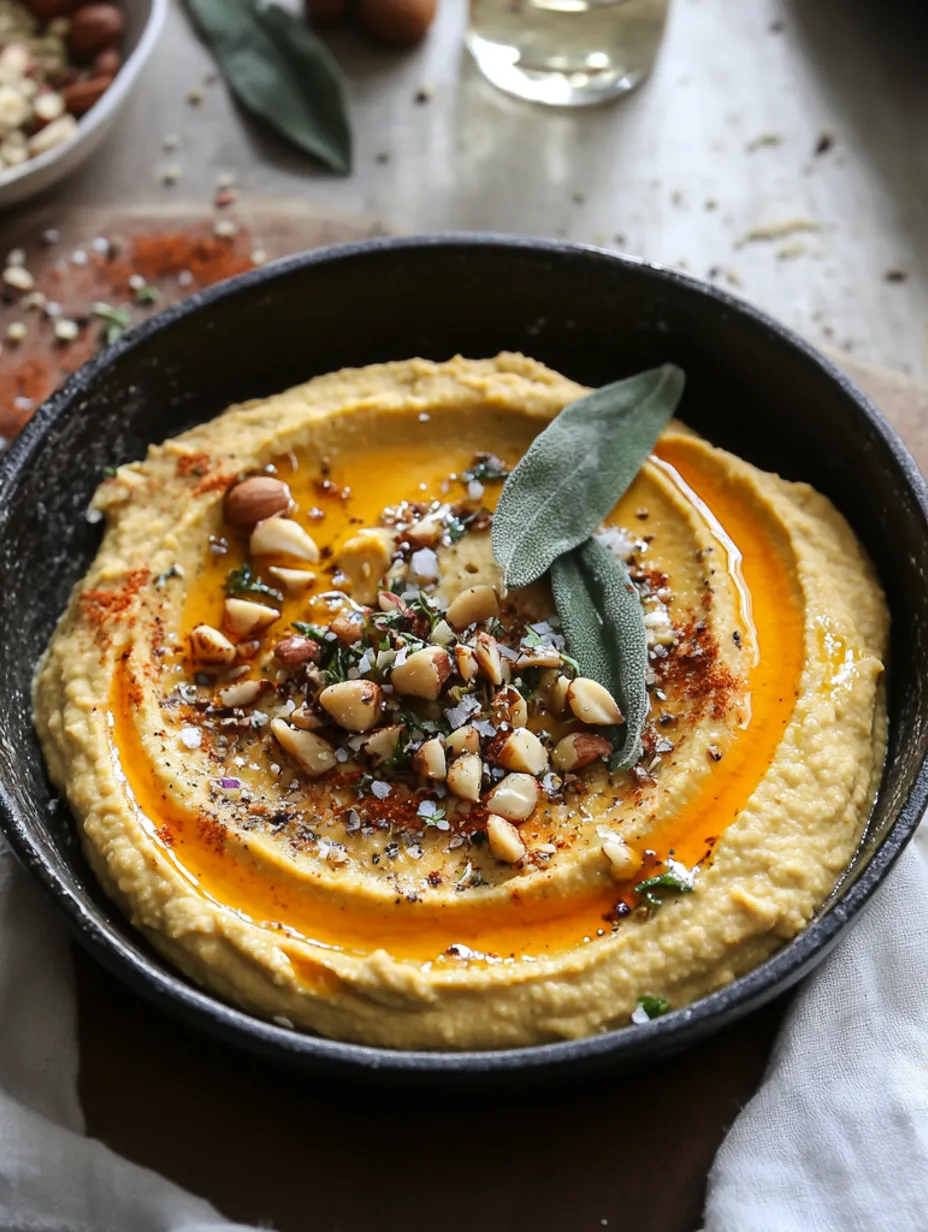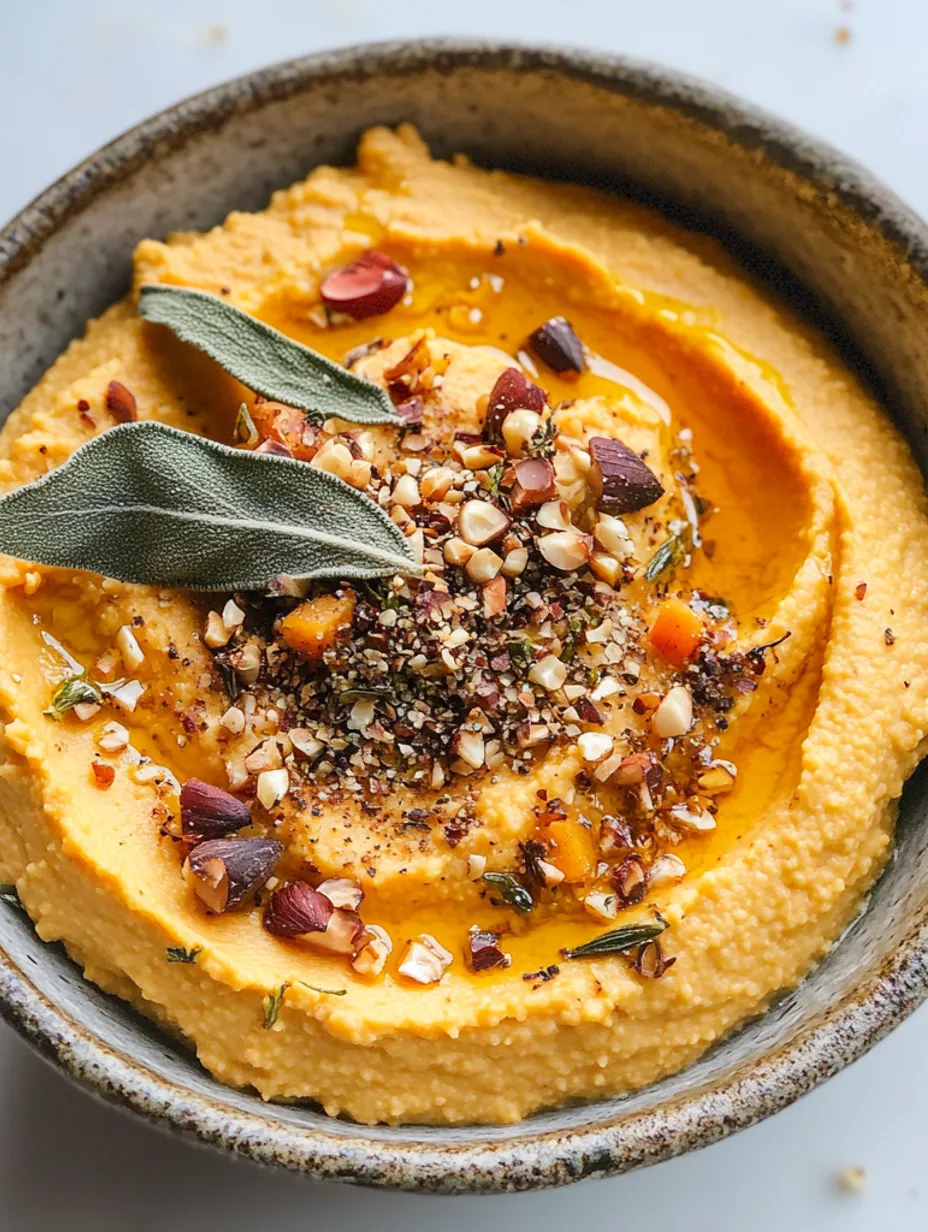 Pin it
Pin it
The aroma of roasted butternut squash mingling with toasted spices brings an unexpected twist to traditional hummus that transforms this everyday spread into something truly memorable. My journey with this recipe began during a chilly autumn evening when I found myself staring at leftover roasted squash and a can of chickpeas, wondering how to create something different from my usual rotation of fall recipes. The resulting butternut squash hummus has since become a staple in my kitchen, earning its place at countless gatherings and quiet afternoons alike. The natural sweetness of the squash creates an incredibly smooth, velvet-like texture that perfectly complements the nutty undertones of tahini and the aromatic dukkah topping.
When I first served this at a family gathering, my skeptical uncle – who claims hummus should never be "messed with" – went back for seconds and thirds. By the end of the evening, he was asking for the recipe and planning to make it for his weekly card game group.
Ingredient Selection Guide
- Butternut Squash: The foundation of this recipe deserves careful selection. Look for a squash with a solid beige color, free from soft spots or green patches. It should feel heavy for its size, indicating dense, flavorful flesh. The stem should be intact and firm, a sign of freshness
- Chickpeas: While premium canned chickpeas work beautifully, cooking your own from dried yields exceptional results. If using canned, seek out brands that cook their chickpeas with kombu seaweed for improved digestibility
- Tahini: This crucial ingredient can make or break your hummus. Invest in high-quality tahini that flows smoothly and tastes nutty without any bitter aftertaste. Lebanese and Israeli brands often offer superior products
- Extra Virgin Olive Oil: Choose a fruity, high-quality oil that you'd be happy to drizzle on bread. The oil's flavor significantly impacts the final taste
- Fresh Lemons: Skip the bottled juice – fresh lemons provide bright acidity and natural oils from the zest that enhance the overall flavor profile
 Pin it
Pin it
Creating Your Masterpiece
- Base Preparation
- Begin by transforming your butternut squash into sweet, caramelized gold. Cut into even cubes, allowing for consistent roasting
- Toss generously with olive oil, ensuring each piece is coated for maximum caramelization
- Arrange carefully on a preheated baking sheet, giving each cube space to develop color
- Dukkah Assembly
- Toast your whole spices in a dry skillet until they release their aromatic oils and perfume your kitchen
- Transfer to a food processor with toasted nuts, pulsing to achieve a coarse, textured blend
- Store excess in an airtight container, ready to elevate future dishes
- Final Hummus Creation
- Remove the chickpea skins while the squash roasts, a meditative process that yields incredibly smooth results
- Combine warm chickpeas with roasted squash in a high-powered blender for optimal smoothness
- Add tahini, slowly streaming in ice-cold water to achieve the perfect consistency
- Finish with freshly squeezed lemon juice and seasonings, adjusting to taste
My mother-in-law, a hummus purist from Lebanon, initially raised an eyebrow at this variation. However, after watching her grandchildren devour it with both pita and vegetable sticks, she admitted that sometimes tradition can make room for delicious innovation.
The Art of Presentation
Creating an Instagram-worthy presentation isn't just about aesthetics – it enhances the eating experience. Using the back of a spoon, create dramatic swirls and valleys across the surface of your hummus. These indentations serve a practical purpose, cradling pools of olive oil and providing perfect nooks for the dukkah topping to nestle into. A scatter of crispy sage leaves adds both visual appeal and an aromatic element that complements the sweetness of the squash.
Creative Variations
The beauty of this recipe lies in its adaptability. During pumpkin season, swap the butternut squash for roasted pumpkin flesh. Sweet potato creates an equally delicious variation, while roasted carrots offer a different but equally appealing sweetness. For those who enjoy heat, adding harissa paste creates a spicy-sweet combination that's particularly addictive.
Preservation Secrets
Proper storage ensures your hummus maintains its luxurious texture. Create a protective barrier by drizzling a layer of olive oil over the surface before refrigerating. The oil prevents oxidation and keeps the hummus from developing a skin. Always bring it to room temperature before serving, as cold temperatures dull the flavors.
Planning Ahead
This hummus can be prepared up to four days in advance, making it perfect for entertaining. The flavors actually improve after a day or two, as the ingredients have time to meld together. If making ahead, wait to add the dukkah and crispy sage until just before serving to maintain their texture.
 Pin it
Pin it
Professional Chef Tips
- Process your hummus for a full 5-7 minutes in a high-powered blender for the smoothest possible texture
- Save the chickpea liquid (aquafaba) to adjust consistency as needed – it's better than plain water
- Season progressively throughout the preparation process rather than all at once at the end
- Consider warming your serving bowl before plating to keep the hummus at an optimal temperature longer
After countless iterations and experiments, this butternut squash hummus has become more than just another dip – it's a celebration of how traditional recipes can evolve while maintaining their soul. Whether enjoyed as a quiet afternoon snack or the star of a holiday appetizer spread, it never fails to spark joy and conversation. The combination of sweet roasted squash, creamy chickpeas, and aromatic dukkah creates something truly special that bridges the gap between comfort food and sophisticated entertaining.
Frequently Asked Questions
- → Can I make dukkah ahead of time?
- Yes, dukkah keeps well in an airtight container for up to a month. Make extra to sprinkle on other dishes.
- → What can I serve this with?
- Serve with pita bread, crackers, fresh vegetables, or use as a spread in sandwiches and wraps.
- → Can I use canned butternut squash?
- Fresh roasted squash gives the best flavor, but canned purée can work in a pinch. Drain excess liquid first.
- → What can I substitute for hazelnuts?
- While traditional, hazelnuts can be replaced with almonds or walnuts in the dukkah blend.
- → How long does the hummus keep?
- Store in an airtight container in the fridge for up to 5 days. Add toppings just before serving.
